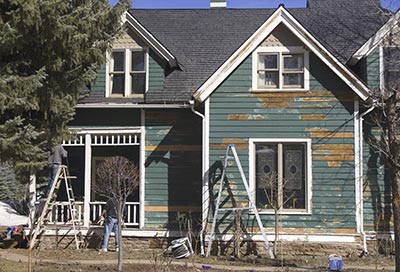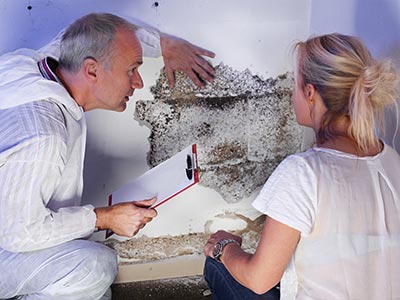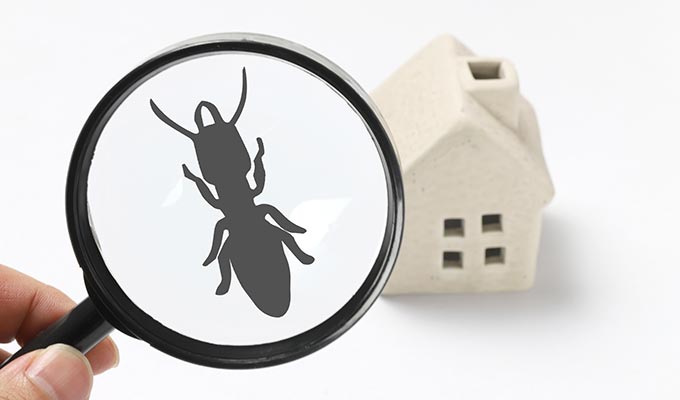A pest control inspection holds a lot of merit. You can easily increase or decrease the value of a property depending on how well you were able to take care of an infestation.
Unfortunately, not all property owners appreciate the importance of maintaining regular pest control. They don’t know whether their home needs to have an annual or biannual inspection, or if they can do it quarterly or half-yearly. This is exactly where an expert’s advice would come in handy.
Learn more about the value of pest control inspection in our latest article. Find out whether your investment property would benefit from a yearly checkup.
Look for a reliable property manager
If you are an investor with multiple properties in your portfolio, having a property manager can benefit your stock significantly. A seasoned manager can help give you expert advice on how to take care of your investment. They can also make sure that all of your wishes for your property are carried out well.
A property manager can go over your tenancy agreements and title deeds for your. They can also arrange for repairs, pest control inspections and other things that your property might need.
With a trusted property manager, you won’t have to worry about calling for and scheduling a pest inspection for your properties. They can advise you on the most suitable pest inspection frequency for your property.
But there are times when you have to make the final call. This is why its important to make your due diligence before buying an investment property.
The following are some of the things you need to remember if you’re a property investor, FHB, or owner-occupier:
- Have the home checked by a pest inspector (professional pest inspectors make use of moisture meters, thermal imaging cameras, and sounding equipment to check for pest infestation.)
- Go over the pest report thoroughly
- Examine the property
To help you understand the importance of pest control inspection, allow me to discuss my last point in greater detail.
Check the age of your property

An older home is vulnerable to pests and may require more frequent than yearly pest inspections. It’s only normal for houses to get worn down as they age.
However, the cracks and gaps that often appear in older houses make enticing habitats for a number of different pests.
It’s a good idea to have pest inspection on the property about twice a year to avoid such a headache.
Check if the property is in a pest-prone zone
There are certain areas that attract pests. If the property is in a heavily-wooded, bushy or damp zone, it is highly likely that pests will be a problem.
To find out if your property is located in a termite-infested area, look for the following signs:
- Damaged or hollowed wood – Termites are notorious for chewing through wooden surfaces in search of cellulose. They often leave long grooves in areas such as walls and floors. If left unchecked, these grooves could end up weakening the structure of your home.
- Blisters in wooden flooring – Underground termites can eat away at the subfloor of your home. This causes wooden floors to look like they just suffered water damage.
- Mud tubes – Termites use mud tubes as tunnels to get to and from their food source. This is because they need certain levels of temperature and humidity to survive. Mud tubes tend to appear on the side of houses that the pests have started to feed on.
- Evidence of swarms – If you see drywood droppings or discarded termite wings around your property, chances are you have a bona fide infestation on your hand. Whenever drywood termites start to feed, they leave their excrement behind in the form of wood pellets. Meanwhile, discarded wings are often a sign that the pests have begun mating with one another.
Holes and cracks on walls or floors are also a good sign that a property is infested with pests. These often serve as homes for cockroaches and rats.
Also, you can check with your prospective neighbours to see if they have problems with pests in their own homes.
Check the fences, look for water formations

See how stable the fences are and check for pathways for pests to enter your property.
Also, find out if there are watercourses running through the house. Living things require water to survive, including pests.
Water sources and humidity attract pests because they can get water from condensation on walls and windows. Bugs also feel comfortable in humid places.
If you see that your property has vulnerabilities, it means frequent pest inspection is necessary.
Your property is worth it: Invest in yearly pest control inspection for your investment property
Whether you want to adjust how often to perform pest control inspection of your investment property largely depends on its age, location, and specific characteristics that make it vulnerable to pest infestation.
An added benefit to having regular pest inspections is pest inspectors can also check for early signs of structural damage.
Here’s the thing: fixing structural damage is expensive. It’s better to nip it in the bud before it gets worse and you have to pay for a major home remediation.
The best pest control programs are regular and long-term

The best pest control programs offer ultimate termite protection and come with warranties.
For the best programs, yearly pest control inspection is the standard, unless your property is old and in a high-risk zone, which calls for more frequent pest inspection.
A pest infestation can quickly spread throughout a property. This is why it’s important to have regular inspections to help protect you investment.
Schedule a pet control inspection for your property today.












